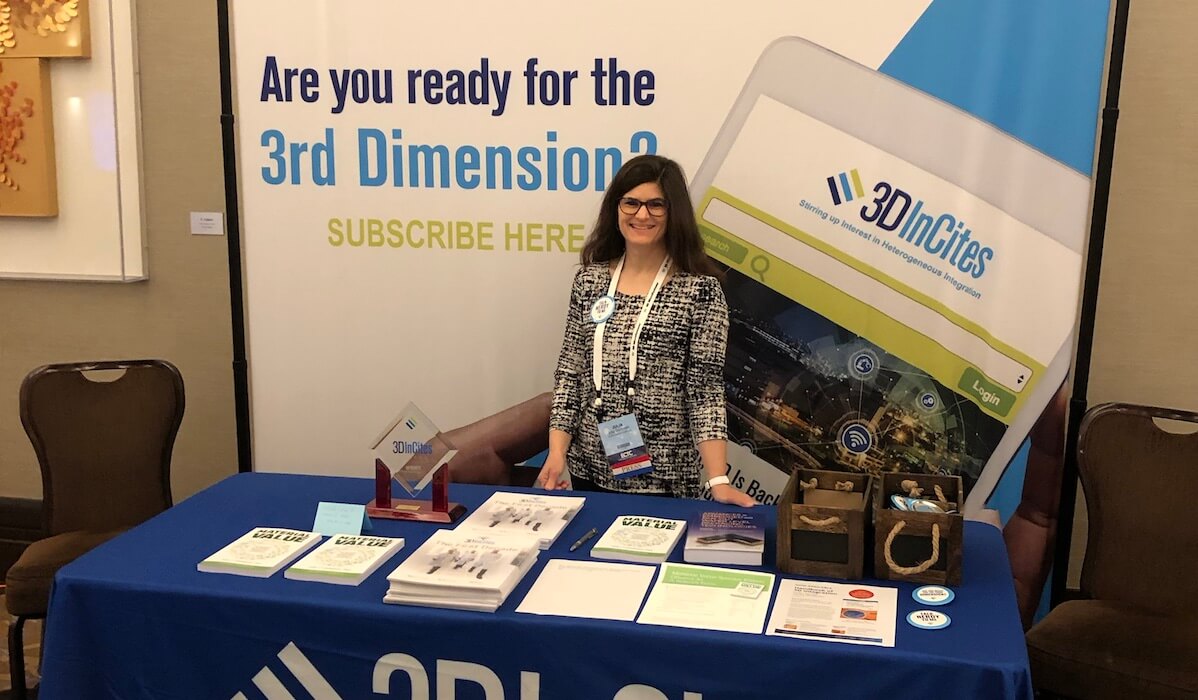Attending ECTC 2019 this year was like a trip through a time machine. From my post at the 3DInCites booth, I talked to people I’ve known for decades and others I was meeting for the first time. By visiting booths and listening to presentations, I gained insight into how the semiconductor packaging industry has evolved in the past decade and why work I did ten or 25 years ago is newly relevant.
ECTC Past
From 2001 through 2008 I served as Technical Editor for Advanced Packaging Magazine and regularly attended industry trade shows, such as ECTC. I now write technical marketing content for companies in the semiconductor industry, but lately, I’m more likely to create white papers and blog posts about the intricacies of extreme ultraviolet lithography than discuss advances in fan-out wafer level packaging.
Because of my experience with lead-free solders and flip-chip packaging in the 1990s and early 2000s, I was especially interested in talks covering these topics. At one point, I heard a speaker say, “multichip modules” and had to smile. Heterogeneous integration has been around for a long time, just using different language, although the ability to pack more functionality into a smaller footprint has improved dramatically.
Ron Kulterman’s presentation, “Impact of Low-Temperature Solder on Electronic Package Dynamic Warpage Behavior and Requirement,” brought me back to the early 1990s when I decided to investigate creep deformation and microstructural changes in lead-free solders for my Ph.D. research. RoHS hadn’t yet been formulated, so this was long before the packaging industry embraced SAC (tin-silver-copper) as the chosen alternative to eutectic tin-lead. I focused on two low-melting binary eutectics, one of which was tin-bismuth (42Sn/58Bi). At the time, I didn’t consider either of my chosen alloys as replacements for eutectic SnPb because their melting temperatures were far too low.
Imagine my surprise, therefore, when Kulterman mentioned SnBi. I hadn’t been following this segment of the industry and wasn’t aware that an iNEMI project launched in 2015 has been studying the reliability of SnBi-based alloys for attaching SAC solder balls to organic printed circuit boards.
These low-temperature solders (LTS), consisting of eutectic SnBi with the optional addition of a small percentage of silver, address an irony that has long bothered me. The need to reflow boards at a higher temperature for a longer time when switching from SnPb to SAC requires more energy, hardly an environmentally friendly alternative even though it removes the toxic element lead. I’m encouraged by this recent development.
While the iNEMI project has characterized a wide range of package types, there is still a need for more work to expand the database and identify ideal LTS composition and reflow profiles to minimize warpage and hot tears and optimize reliability. Kulterman encouraged the audience to submit their packages to iNEMI for characterization with the promise that individual results will not be shared.
…Present…
I walked the show floor with an unconventional topic in mind: the environmental footprint of the semiconductor packaging industry. The websites of at least seventeen of the one hundred exhibiting companies mention ISO 14001 certification, meaning that they have documented their environmental management systems. It is possible that more companies have achieved the certification but didn’t feature it prominently enough to be easy to discover from a quick search. Certification doesn’t require a specific level of environmental performance but measuring and documenting encourages improvement.
I found a range of responses when I asked exhibitors about initiatives that their companies had undertaken. Some commented that they weren’t aware of their company’s efforts but were glad to hear that they worked for a company that was ahead of the curve. Others were aware but suggested that I talk to someone at their corporate headquarters (often located in Japan or Europe) to learn more.
In all fairness, exhibitors don’t send their marketing VPs or heads of CSR to trade shows, so I don’t fault the sales representatives for their lack of knowledge. If the environmental footprint isn’t a high priority for customers, the sales team isn’t going to make it part of their message. Customers in this industry tend to care more about the performance and cost of a material or piece of equipment than where and how it is manufactured. While that makes sense, I believe there is an opportunity for education.

I intend to follow up and dig deeper into attitudes and concerns around resource usage, waste disposal, phasing out of hazardous chemicals, and more. The publicly available reports from exhibitors such as Amkor, ASE Group, and Unisem that are members of the Responsible Business Alliance suggest that the semiconductor packaging industry can become more environmentally friendly without sacrificing product performance and while maintaining long-term financial health. If the message spreads throughout the supply chain, companies large and small will find it beneficial to adjust their manufacturing processes and share the news with customers and suppliers.
…and Future
I, unfortunately, didn’t arrive at ECTC in Las Vegas in time to attend Tuesday morning’s special session on transient electronics. I was curious about how something transient—presumably temporary and disposable—held promise for greener manufacturing, so I reached out to the presenters to get an overview of what I missed.
The premise—sensors and electronic components that can degrade or disappear after use—is fascinating but not quite ready for commercial use. As with any new technology, extensive material characterization and development of reliable high-volume manufacturing processes will be needed for the concept to be ready for commercial use.
According to session co-chair W. Hong Yeo, the “green” aspect of transient electronics lies in the potential to address the growing e-waste problem. Electronic devices and sensors made from bioresorbable materials that dissolve in the human body would also be industrially compostable when implemented in applications outside of biomedical implants, such as monitoring food safety or plant health. Transient electronics can’t completely replace today’s rigid electronic devices, but their potential in limited applications is worth following.



















